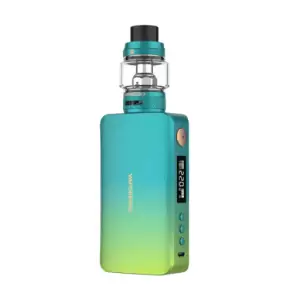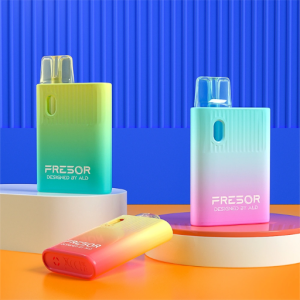Introduction: The Global Landscape of Vaping
In recent years, the vaping industry has witnessed an unprecedented surge in popularity, with disposable vapes standing at the forefront of this trend. These convenient, easy-to-use devices have captivated a global audience, offering a smoke-free alternative to traditional cigarettes. However, as disposable vape continue to weave their way into the fabric of daily life across continents, the importance of understanding their cultural acceptance and legal standing becomes paramount.
The rise of disposable vape reflects a broader shift towards vaping as a lifestyle choice, with millions around the world embracing these devices for their convenience, variety of flavors, and perceived health benefits compared to smoking. Yet, the global landscape of vaping is far from uniform. Regulations and societal norms surrounding disposable vapes vary significantly from one country to another, influenced by public health concerns, regulatory frameworks, and cultural attitudes towards smoking and nicotine consumption.
Navigating this complex terrain requires vapers, especially those who travel internationally, to be well-informed about where disposable vape are legally accepted and where they are banned. Understanding these distinctions is not only crucial for complying with local laws but also for respecting cultural norms and contributing positively to the communities visited.
Dr. Fiona Reynolds, a renowned public health expert, emphasizes the need for awareness: “As vaping becomes more prevalent globally, the diversity in regulations and cultural perceptions of disposable vapes presents a challenge for international travelers. Staying informed and respectful of local norms is essential for ensuring a positive experience, both for vapers and the societies they interact with.”
This introduction sets the stage for a deeper exploration into the world of disposable vapes, highlighting the critical importance of understanding the global etiquette and legal frameworks that govern their use. As we delve further into this guide, we aim to equip readers with the knowledge needed to navigate the global vaping landscape confidently and responsibly.

Components and Functionality of Disposable Vapes
At the heart of the disposable vape phenomenon lies its simplicity and convenience, attributes that have propelled its popularity among users worldwide. Understanding the components and functionality of disposable vapes is essential for both beginners and seasoned vapers, as it sheds light on why these devices have become a favored choice across different cultures.
A typical disposable vape consists of three main components: a battery, an atomizer, and a reservoir filled with e-liquid. The battery powers the atomizer, which heats the e-liquid, transforming it into vapor that the user inhales. This process does not involve combustion, distinguishing vaping from traditional smoking methods and contributing to its appeal as a cleaner alternative.
Disposable vapes are designed for single use, with no need for refilling or recharging, embodying the ultimate convenience for users on the go. This feature particularly appeals to travelers and those transitioning from smoking to vaping, offering a straightforward entry point into the world of vaping without the commitment to more complex, reusable devices.
Dr. Henry Clarkson, an expert in nicotine technology, explains, “Disposable vapes have revolutionized the way people consume nicotine, providing an accessible, user-friendly option that eliminates many of the barriers associated with traditional vaping devices. Their ease of use and the variety of flavors available make them an attractive choice for a wide audience, from former smokers to new vapers exploring their options.”
The appeal of disposable vapes extends beyond their functionality and convenience. They come in a myriad of flavors and strengths, catering to diverse preferences and needs. This variety, coupled with the discreet nature of disposable vapes, has contributed to their global acceptance, making them a staple in the vaping community and a subject of cultural adaptation.
Understanding the components and functionality of disposable vapes is crucial for anyone looking to engage with the vaping culture, especially in international settings. It highlights the blend of technology and convenience that defines the disposable vape market, providing insight into its widespread appeal and the role it plays in the global shift towards vaping.
Navigating the Legalities: A Global Overview
The legal landscape for disposable vapes varies significantly around the globe, presenting a complex picture for international travelers. Understanding these legal nuances is crucial for anyone planning to travel with disposable vapes to ensure compliance and avoid unintended consequences.
In some regions, disposable vapes are embraced as a less harmful alternative to traditional tobacco products, with regulations focusing on quality control and age restrictions to prevent underage vaping. For instance, countries like the United Kingdom have implemented specific guidelines that regulate the sale and use of disposable vapes, including limits on nicotine strength and e-liquid volume, under the broader framework of tobacco harm reduction.
Conversely, other countries have taken a more stringent approach, imposing complete bans on the sale and use of disposable vapes. Nations such as Thailand, Singapore, and Brazil enforce strict penalties for possession or sale of vaping products, reflecting a zero-tolerance policy towards any form of vaping. Travelers caught with disposable vapes in these countries may face hefty fines, confiscation of the devices, or even legal proceedings.
Legal expert on international vaping laws, Dr. Emily Roberts, advises, “Before traveling with disposable vapes, it’s imperative to conduct thorough research on your destination’s vaping laws. The legal status of vaping products can change rapidly, and ignorance of the law is not a defense in most jurisdictions. Familiarizing yourself with the local regulations can prevent unforeseen legal issues and ensure a smooth travel experience.”
The disparity in regulations highlights the importance of staying informed about the current legal status of disposable vapes in different countries. Official government websites, travel advisories, and forums dedicated to vaping can be valuable resources for up-to-date information. Additionally, contacting the embassy or consulate of your destination country can provide authoritative guidance on local laws concerning disposable vapes.
Navigating the global legal landscape requires vigilance and an understanding that attitudes towards disposable vapes can reflect broader cultural and health-related concerns. As such, travelers should not only be aware of the legal status of disposable vapes in their destination countries but also be prepared to respect local customs and preferences regarding vaping.
How to Research Vaping Laws Before Traveling
For travelers who enjoy vaping, especially those who prefer disposable vapes, preparing for a trip involves more than packing essentials; it requires a thorough understanding of the vaping laws in your destination country. Here’s how you can ensure you’re well-informed and compliant with local regulations.
Consult Official Government Health and Travel Websites: Start with the most reliable sources – the health and travel advisories published by official government websites of the countries you plan to visit. These sites often have the most current and comprehensive information on restrictions and regulations regarding disposable vapes.
Reach Out to Embassies or Consulates: For specific inquiries or clarifications, contact the embassy or consulate of your destination country. They can provide up-to-date legal information and advice on vaping laws and any recent changes that might affect your travel.
Use Vaping Advocacy and Informational Websites: Numerous vaping advocacy groups and informational websites offer insights into the global landscape of vaping laws. These platforms can be valuable resources for understanding broader trends and specific regulations.
Engage with Online Travel and Vaping Communities: Online forums and social media groups dedicated to vaping or travel can offer real-world advice and experiences from fellow travelers. Sites like Reddit, TripAdvisor, or specific vaping forums are good places to ask questions and share information.
Check with Your Airline: Airline policies on transporting disposable vapes, particularly regarding carry-on and checked luggage, can vary. Review your airline’s guidelines to ensure you comply with their policies and avoid any issues during your flight.
Stay Updated with News Outlets: Keep an eye on international news regarding vaping laws and regulations. Legislative changes can happen quickly, and being informed can help you adjust your travel plans accordingly.
Dr. Laura Benson, an expert in public health and tobacco control, emphasizes the importance of research: “Vaping laws around the world are as diverse as the countries themselves, influenced by cultural, health, and legal factors. Travelers who vape must take the initiative to research and understand these laws to navigate the complexities of international travel with disposable vapes. Preparation is key to a hassle-free journey.”
By following these steps, travelers can better prepare themselves for international travel with disposable vapes, ensuring they respect local laws and customs, and enjoy their vaping experience without legal concerns.
Packing and Traveling with Disposable Vapes: Dos and Dont’s
Traveling with disposable vapes requires careful consideration to ensure you remain compliant with airline regulations and destination laws. Here are essential dos and don’ts to help you navigate the process smoothly.
Do: Understand Airline Policies
Airlines typically allow disposable vapes in carry-on luggage but prohibit them in checked baggage due to safety concerns with batteries. Always check your airline’s specific policy before flying.
Do: Be Aware of Quantity Limits
Some destinations and airlines limit the number of disposable vapes you can carry. Verify these limits to avoid issues at security checks or customs.
Do: Store Them Properly
Keep disposable vapes and any spare units in a clear, sealable bag to prevent leaks. This also facilitates easier inspection by security personnel.
Don’t: Vape on the Plane or in the Airport
Using disposable vapes on airplanes or in airports is generally prohibited. Respect these rules to avoid penalties or discomfort to fellow passengers.
Don’t: Forget to Research Your Destination’s Laws
Before packing disposable vapes for your trip, ensure they are legal in your destination. Knowing the local laws can save you from legal troubles upon arrival.
Do: Dispose of Used Vapes Responsibly
Plan for the proper disposal of your disposable vapes. Look for e-waste bins or take them back home where e-waste recycling options are available.
Don’t: Assume Vaping Is Permitted Everywhere
Even if disposable vapes are legal in your destination, local regulations on where you can vape may apply. Public places, restaurants, and hotels might have their own restrictions.
Public health expert Dr. Marcus Tan comments, “Traveling with disposable vapes demands a high level of responsibility. From respecting airline policies to adhering to local laws, the onus is on the traveler to ensure their vaping does not infringe upon the rules or cultural norms of their destination.”
By adhering to these dos and don’ts, travelers can enjoy the convenience of their disposable vapes without running afoul of regulations, ensuring a pleasant journey for themselves and those around them.
Future Trends: The Evolving Status of Disposable Vapes Globally
As we look toward the future, the status of disposable vapes on the international stage is poised for significant evolution. Changes in public health perspectives, technological advancements, and shifts in societal attitudes are expected to shape the regulatory and cultural landscape of vaping. Here, we explore potential trends and how they might influence the acceptance and regulation of disposable vapes around the world.
Increased Regulatory Harmonization: As the global market for disposable vapes grows, there may be a push towards more harmonized regulations to facilitate international trade while ensuring product safety and consumer protection. This could lead to standardized practices for manufacturing, labeling, and sales across borders, making it easier for travelers to understand and comply with vaping laws.
Stricter Measures on Youth Access and Marketing: Given widespread concerns about youth vaping, future regulations are likely to become even stricter regarding the marketing of disposable vapes and access by minors. This could include global initiatives to implement uniform age verification processes and restrictions on advertising that appeals to younger audiences.
Advancements in Eco-Friendly Vaping Solutions: Environmental concerns related to the disposal of disposable vapes are prompting innovation towards more sustainable vaping products. Future trends may include the development of biodegradable materials, refillable options, and recycling programs specifically designed for vaping devices, addressing the environmental impact of vaping.
Public Health Research Influencing Policies: Ongoing research into the health effects of vaping is expected to continue influencing policy decisions. As more data becomes available, countries may adjust their regulatory approaches to balance the potential benefits of disposable vapes for smoking cessation with the need to protect public health.
Cultural Shifts Towards Vaping Acceptance: Societal attitudes towards vaping are also likely to evolve. As disposable vapes become more embedded in social norms, and their role in harm reduction becomes better understood, we may see a shift towards broader cultural acceptance, albeit with a continued focus on responsible use and public etiquette.
Dr. Simon Kellaway, a leading expert in tobacco control policy, comments on the future outlook: “The trajectory for disposable vapes is one of cautious optimism. With the right balance of regulation, innovation, and education, vaping can occupy a sensible place in our societies as a tool for harm reduction, provided that the focus remains on public health and sustainability.”
As these trends unfold, travelers who vape will need to stay informed and adaptable, ready to navigate the changing regulations and cultural attitudes towards disposable vapes. The future of vaping internationally is not set in stone, but by anticipating these shifts, vapers can prepare for a world where vaping is understood, regulated, and integrated into global cultures in a way that prioritizes health, respect, and environmental stewardship.
Conclusion: The Importance of Being Informed and Respectful
In the dynamic landscape of global vaping etiquette and laws, the importance of staying informed and respectful cannot be overstressed. For tourists and international travelers, understanding where disposable vapes are accepted or banned is crucial to navigate the complexities of vaping around the world. This knowledge not only ensures compliance with local regulations but also fosters a sense of global citizenship, respecting the cultures and norms of the places visited.
The journey through the various aspects of vaping, from the basic components and functionality of disposable vapes to navigating legalities and cultural acceptance, underscores a broader theme: the significance of being both well-informed and considerate. As we’ve explored, the consequences of ignoring local vaping etiquette and regulations can range from legal repercussions to social ostracization, highlighting the need for diligence and respect in our global village.
For those who choose to vape, it’s imperative to research and understand the specific laws and social norms of your destination. This preparation not only prevents unwanted surprises but also ensures that your vaping practices contribute positively to the environments you enter. It’s about more than just following rules; it’s about demonstrating respect for diverse cultures and communities.
In closing, let us remember the words of health policy expert Dr. Angela Stanton: “Navigating the world of disposable vapes internationally isn’t just about adhering to laws; it’s about contributing to a global community where respect, understanding, and responsibility are paramount. As we move forward, let’s embrace the complexity of vaping in a way that honors both individual choice and collective well-being.”
As the landscape of disposable vapes continues to evolve, staying ahead of the curve is essential. By remaining informed and respectful, vapers can ensure their practices align not only with legal frameworks but also with the cultural tapestries of the destinations they visit, making every puff an act of global citizenship.

FAQs: Common Questions About Disposable Vapes
Q: What are disposable vapes?
A: Disposable vapes are single-use electronic cigarettes pre-filled with e-liquid. They consist of a battery, atomizer, and are designed for convenience, requiring no refilling or recharging.
Q: How long do disposable vapes last?
A: The lifespan of disposable vapes varies depending on usage patterns and the specific product. Typically, they last for 200 to 400 puffs, equivalent to one or two packs of traditional cigarettes.
Q: Are disposable vapes safer than traditional cigarettes?
A: While disposable vapes do not contain tobacco, they still deliver nicotine, a highly addictive substance. Some health experts argue they are less harmful than smoking because they don’t produce tar or carbon monoxide, but long-term health impacts are still under research.
Q: Can I bring disposable vapes on a plane?
A: Yes, but with restrictions. Disposable vapes must be carried in carry-on luggage, not checked baggage. It’s crucial to check both the airline’s policy and the destination’s regulations regarding vaping devices.
Q: Why are disposable vapes banned in some places?
A: Bans on disposable vapes can be due to health concerns, environmental issues, or efforts to reduce youth vaping. Regulations vary widely across regions, reflecting differing attitudes towards vaping products.
Q: How do I dispose of a disposable vape responsibly?
A: Since disposable vapes contain batteries and electronic components, they should not be thrown in regular trash. Look for electronic waste recycling programs in your area for proper disposal.
Q: Can disposable vapes help me quit smoking?
A: Some smokers use disposable vapes as a tool to quit smoking, leveraging the ability to control nicotine intake. However, effectiveness varies by individual, and consulting a health professional is recommended for those looking to quit nicotine products altogether.






